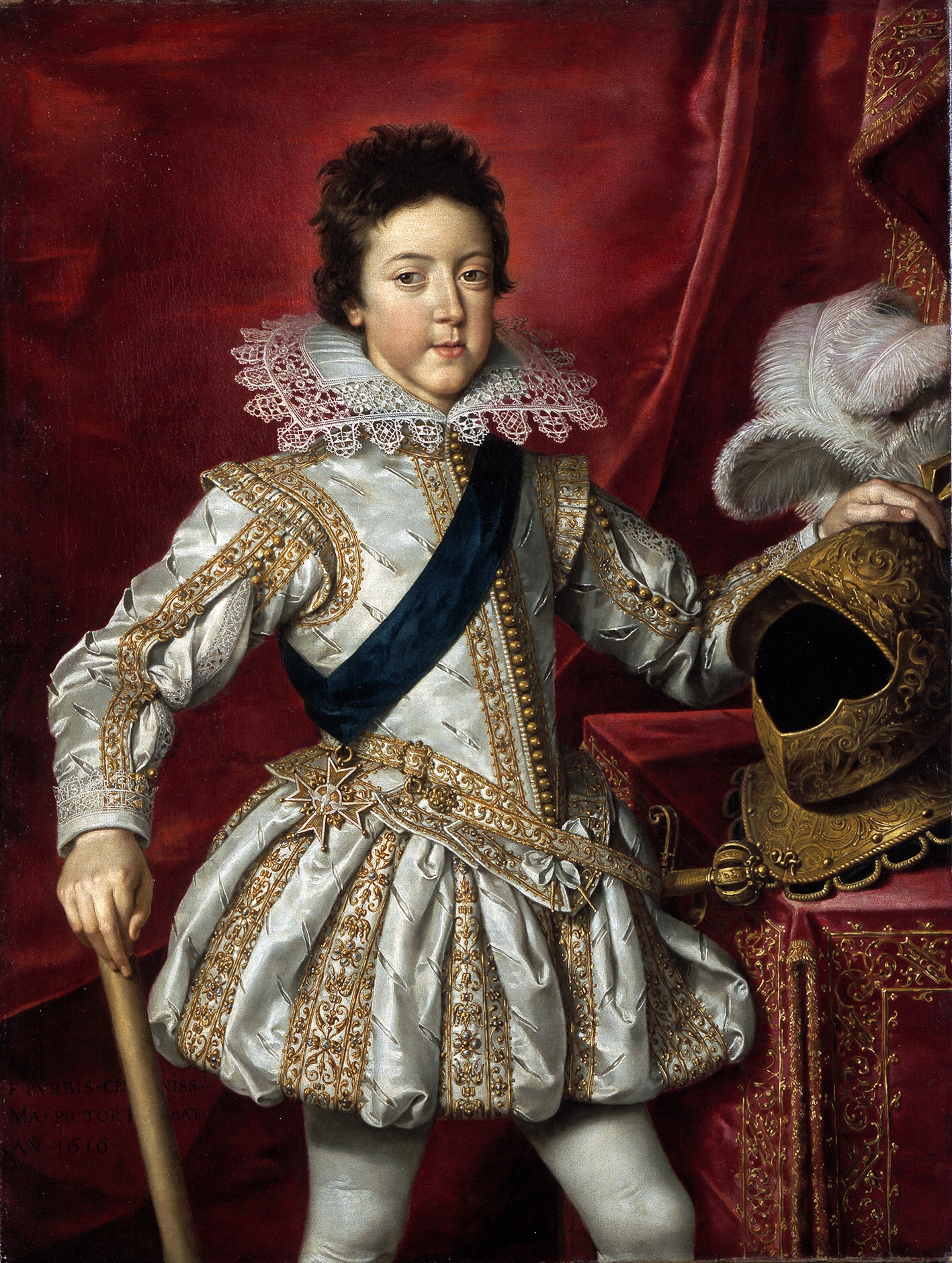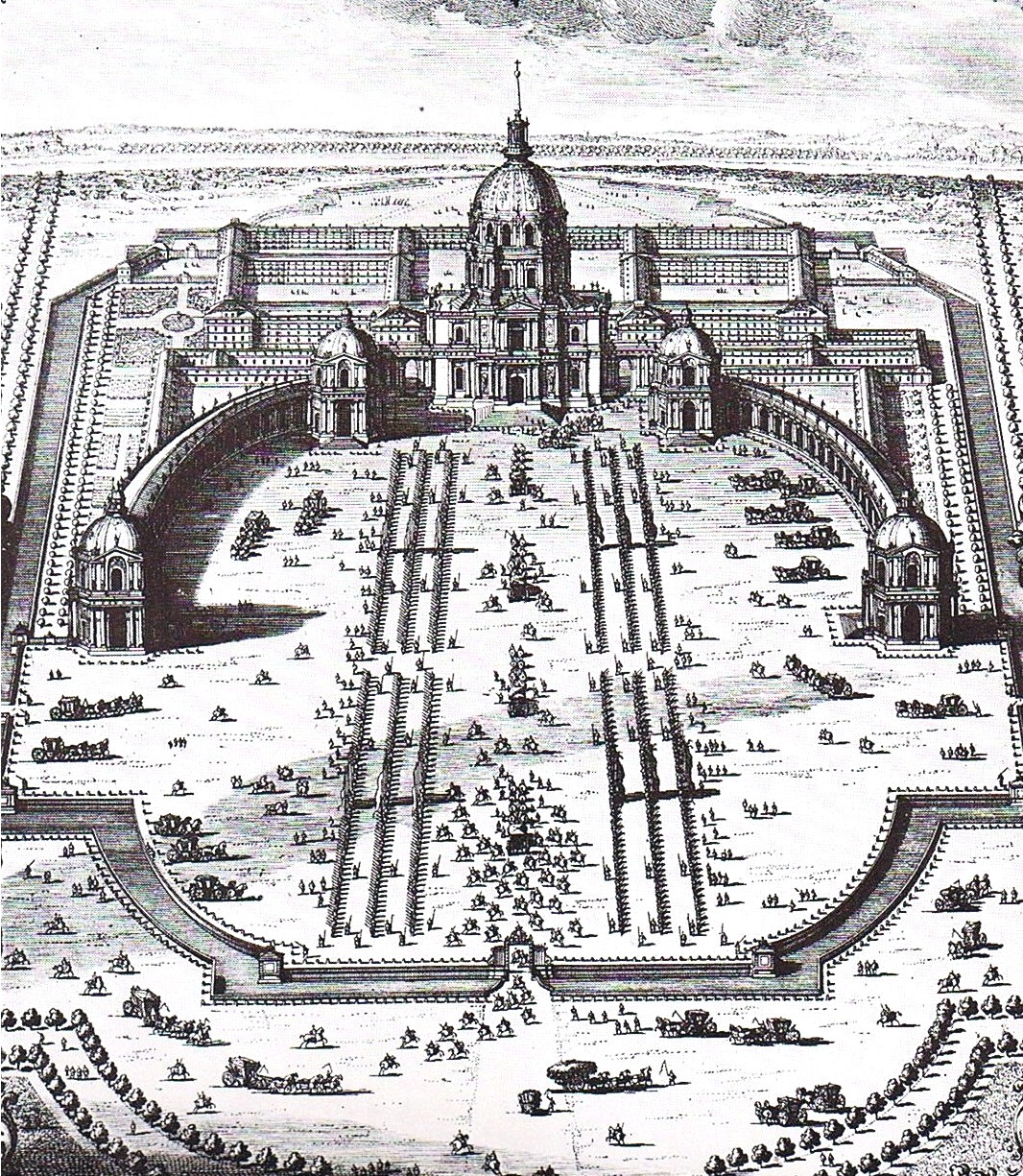|
Château De La Trousse
Château de la Trousse is a stately home situated in the commune of Ocquerre in the Seine-et-Marne department in the Île-de-France region in north-central France. History The original château was built around 1630 in the reign of Louis XIII of France, Louis XIII by Sebastian le Hardy whose family lived there until 1791. Louis XIV of France, Louis XIV is said to have visited around 1651 and commented that the chateau was "''bien troussé''" ("well fitted-out"), perhaps suggesting the origin of the name Château de la Trousse. The King bestowed the List of French marquisates, title of Marquis on the le Hardy family in 1651. The château was renovated and improved during the 1680s when the then owner, Marquis Phillipe-August le Hardy, employed the services of the famous architect Liberal Bruant, the architect of the Hotel des Invalides in Paris. In 1684, their only child, Marie-Henriette le Hardy, married a north Italian prince, Amede-Adolphe dal Pozzo, Marquis de Vognere. Phill ... [...More Info...] [...Related Items...] OR: [Wikipedia] [Google] [Baidu] |
Ocquerre
Ocquerre () is a commune in the Seine-et-Marne department in the Île-de-France region in north-central France. Demographics Inhabitants are called ''Ocquerrois''. See also *Communes of the Seine-et-Marne department The following is a list of the 507 communes of the Seine-et-Marne department of France. The communes cooperate in the following intercommunalities (as of 2025): References External links 1999 Land Use, from IAURIF (Institute for Urban Planning and Development of the Paris-Île-de-France région) * [...More Info...] [...Related Items...] OR: [Wikipedia] [Google] [Baidu] |
Seine-et-Marne
Seine-et-Marne () is a department in the Île-de-France region in Northern France. Named after the rivers Seine and Marne, it is the region's largest department with an area of 5,915 square kilometres (2,284 square miles); it roughly covers its eastern half. In 2019, it had a population of 1,421,197.Populations légales 2019: 77 Seine-et-Marne INSEE Its is Melun, although both Meaux and [...More Info...] [...Related Items...] OR: [Wikipedia] [Google] [Baidu] |
Île-de-France
The Île-de-France (; ; ) is the most populous of the eighteen regions of France, with an official estimated population of 12,271,794 residents on 1 January 2023. Centered on the capital Paris, it is located in the north-central part of the country and often called the Paris Region (, ). Île-de-France is densely populated and retains a prime economic position on the national stage, and it covers , about 2% of Metropolitan France, metropolitan French territory. Its 2017 population was nearly one-fifth of the national total. The region is made up of eight administrative Departments of France, departments: Paris, Essonne, Hauts-de-Seine, Seine-Saint-Denis, Seine-et-Marne, Val-de-Marne, Val-d'Oise and Yvelines. It was created as the "District of the Paris Region" in 1961. In 1976, when its status was aligned with the French administrative regions created in 1972, it was renamed after the historic province of Île-de-France. Residents are sometimes referred to as ''Franciliens'', an ... [...More Info...] [...Related Items...] OR: [Wikipedia] [Google] [Baidu] |
France
France, officially the French Republic, is a country located primarily in Western Europe. Overseas France, Its overseas regions and territories include French Guiana in South America, Saint Pierre and Miquelon in the Atlantic Ocean#North Atlantic, North Atlantic, the French West Indies, and List of islands of France, many islands in Oceania and the Indian Ocean, giving it Exclusive economic zone of France, one of the largest discontiguous exclusive economic zones in the world. Metropolitan France shares borders with Belgium and Luxembourg to the north; Germany to the northeast; Switzerland to the east; Italy and Monaco to the southeast; Andorra and Spain to the south; and a maritime border with the United Kingdom to the northwest. Its metropolitan area extends from the Rhine to the Atlantic Ocean and from the Mediterranean Sea to the English Channel and the North Sea. Its Regions of France, eighteen integral regions—five of which are overseas—span a combined area of and hav ... [...More Info...] [...Related Items...] OR: [Wikipedia] [Google] [Baidu] |
Louis XIII Of France
Louis XIII (; sometimes called the Just; 27 September 1601 – 14 May 1643) was King of France from 1610 until his death in 1643 and King of Navarre (as Louis II) from 1610 to 1620, when the crown of Navarre was merged with the French crown. Shortly before his ninth birthday, Louis became king of France and Navarre after his father Henry IV of France, Henry IV was assassinated. His mother, Marie de' Medici, acted as regent during his minority. Mismanagement of the kingdom and ceaseless political intrigues by Marie and her Italian favourites led the young king to take power in 1617 by exiling his mother and executing her followers, including Concino Concini, the most influential Italian at the French court. Louis XIII, taciturn and suspicious, relied heavily on his chief ministers, first Charles d'Albert, duc de Luynes and then Cardinal Richelieu, to govern the Kingdom of France. The King and the Cardinal are remembered for establishing the ''Académie française'', and ending ... [...More Info...] [...Related Items...] OR: [Wikipedia] [Google] [Baidu] |
Louis XIV Of France
LouisXIV (Louis-Dieudonné; 5 September 16381 September 1715), also known as Louis the Great () or the Sun King (), was King of France from 1643 until his death in 1715. His verified reign of 72 years and 110 days is the List of longest-reigning monarchs, longest of any monarch in history. An emblem of the Absolutism (European history), age of absolutism in Europe, Louis XIV's legacy includes French colonial empire, French colonial expansion, the conclusion of the Thirty Years' War involving the Habsburgs, and a controlling influence on the Académie royale de peinture et de sculpture, style of fine arts and architecture in France, including the transformation of the Palace of Versailles into a center of royal power and politics. Louis XIV's pageantry and opulence helped define the French Baroque architecture, French Baroque style of art and architecture and promoted his image as absolute ruler of France in the early modern period. Louis XIV began his personal rule of France ... [...More Info...] [...Related Items...] OR: [Wikipedia] [Google] [Baidu] |
List Of French Marquisates
A list is a set of discrete items of information collected and set forth in some format for utility, entertainment, or other purposes. A list may be memorialized in any number of ways, including existing only in the mind of the list-maker, but lists are frequently written down on paper, or maintained electronically. Lists are "most frequently a tool", and "one does not ''read'' but only ''uses'' a list: one looks up the relevant information in it, but usually does not need to deal with it as a whole".Lucie Doležalová,The Potential and Limitations of Studying Lists, in Lucie Doležalová, ed., ''The Charm of a List: From the Sumerians to Computerised Data Processing'' (2009). Purpose It has been observed that, with a few exceptions, "the scholarship on lists remains fragmented". David Wallechinsky, a co-author of ''The Book of Lists'', described the attraction of lists as being "because we live in an era of overstimulation, especially in terms of information, and lists help us ... [...More Info...] [...Related Items...] OR: [Wikipedia] [Google] [Baidu] |
Liberal Bruant
Liberal or liberalism may refer to: Politics * Generally, a supporter of the political philosophy liberalism. Liberals may be politically left or right but tend to be centrist. * An adherent of a Liberal Party (See also Liberal parties by country) * Classical liberalism * Liberalism (international relations) * Sexually liberal feminism * Social liberalism Arts, entertainment and media * ''El Liberal'', a Spanish newspaper published 1879–1936 * ''The Liberal'', a British political magazine published 2004–2012 * ''Liberalism'' (book), a 1927 book by Ludwig von Mises * "Liberal", a song by Band-Maid from the 2019 album '' Conqueror'' Places in the United States * Liberal, Indiana * Liberal, Kansas * Liberal, Missouri * Liberal, Oregon Religion * Religious liberalism * Liberal Christianity * Liberalism and progressivism within Islam * Liberal Judaism (other) People * Julia Liberal Liberal (born 1967), Spanish politician See also * * * Liberal arts (disambiguation ... [...More Info...] [...Related Items...] OR: [Wikipedia] [Google] [Baidu] |
Hotel Des Invalides
The Hôtel des Invalides (; ), commonly called (; ), is a complex of buildings in the 7th arrondissement of Paris, France, containing museums and monuments, all relating to the military history of France, as well as a hospital and an old soldiers' retirement home, the building's original purpose. The buildings house the Musée de l'Armée, the museum of the Army of France, the Musée des Plans-Reliefs, and the Musée d'Histoire Contemporaine. The complex also includes the Cathedral of Saint-Louis-des-Invalides, the national cathedral of the French military. It is adjacent to the Royal Chapel known as the , the tallest church building in Paris at a height of 107 meters. The latter has been converted into a shrine to some of France's leading military figures, most notably the tomb of Napoleon. History Louis XIV initiated the project by an order dated 24 November 1670 to create a home and hospital for aged and disabled () soldiers, the veterans of his many military campaigns. ... [...More Info...] [...Related Items...] OR: [Wikipedia] [Google] [Baidu] |
Orangery
An orangery or orangerie is a room or dedicated building, historically where orange and other fruit trees are protected during the winter, as a large form of greenhouse or conservatory. In the modern day an orangery could refer to either a conservatory or greenhouse built to house fruit trees, or a conservatory or greenhouse meant for another purpose. The orangery provided a luxurious extension of the normal range and season of woody plants, extending the protection which had long been afforded by the warmth offered from a masonry fruit wall. During the 17th century, fruits like orange, pomegranate, and bananas arrived in huge quantities to European ports. Since these plants were not adapted to the harsh European winters, orangeries were invented to protect and sustain them. The high cost of glass made orangeries a status symbol showing wealth and luxury. Gradually, due to technological advancements, orangeries became more of a classic architectural structure that enh ... [...More Info...] [...Related Items...] OR: [Wikipedia] [Google] [Baidu] |





